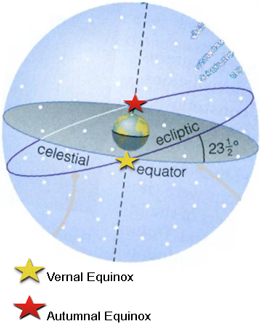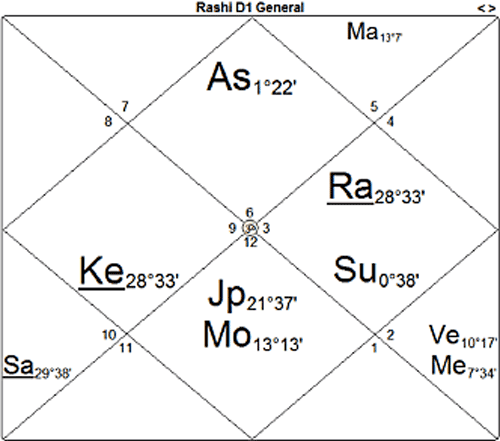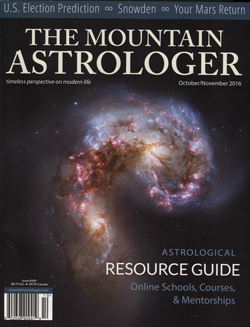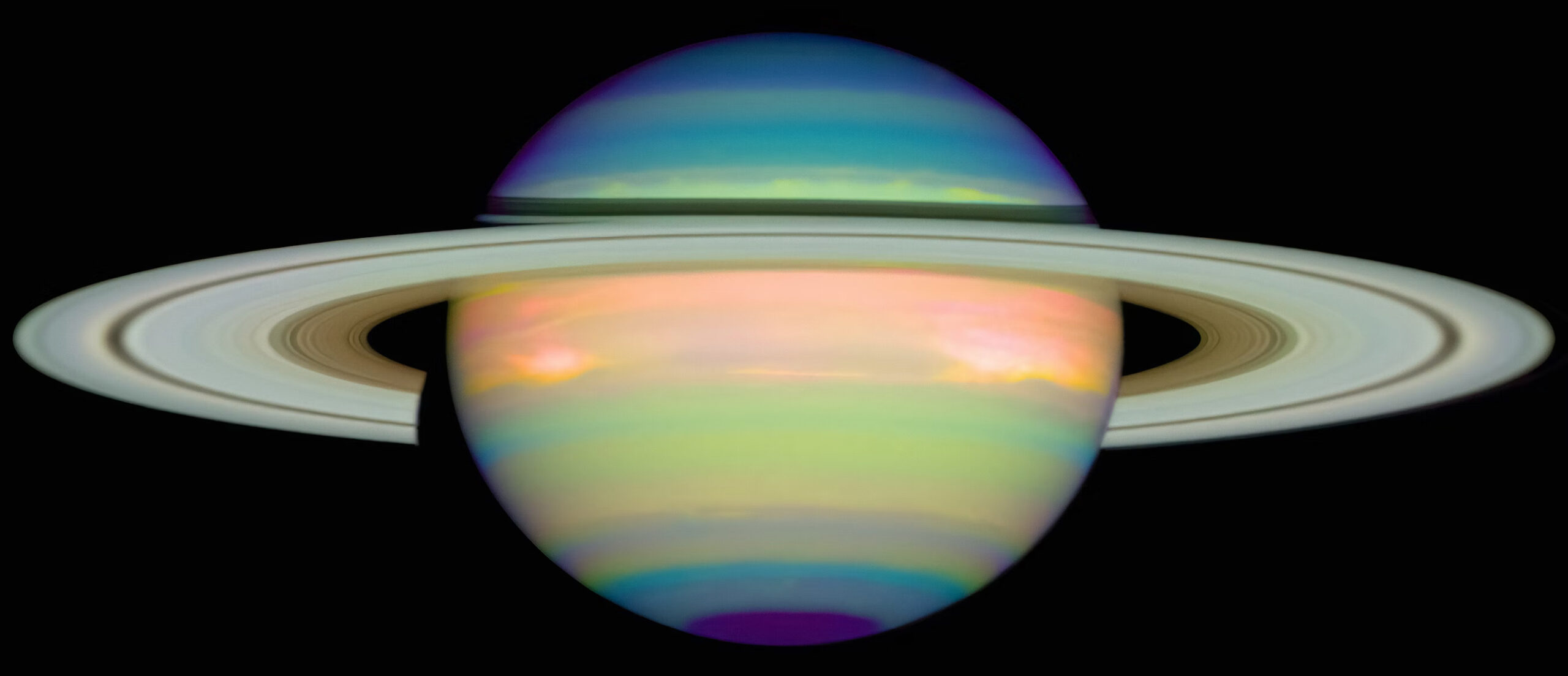Spring | Summer | Fall | Winter | |
2025 | Volume 67 |
| Volume 65 | Volume 66 |
Volume 34, 22 September 2016
“The calm and balanced mind is the strong and great mind; the hurried and agitated mind is the weak one.”
Using the Autumnal Equinox as a Tool for Finding True East and West
The autumnal equinox falls this year on September 22nd at 10:21 AM EDT (14:21 UTC. The autumnal equinox represents one of the two intersection points of the ecliptic with the celestial equator; the other being the vernal equinox. The ecliptic is an imaginary line on the sky that marks the yearly path of the Sun through the zodiac as seen from earth. The celestial equator is the earth's equator projected out into space).Jyotisha is literally the study of light and as lovers of this vidya, light is our highest inspiration.

Without this axial tilt, we would not have our seasons. For half the year beginning around March 21st, the Northern Hemisphere tips towards the Sun with the maximum tilt occurring around June 21st. This brings spring and summer to this half of the globe and gives autumn and winter to the Southern Hemisphere.
Although day and night are usually regarded as exactly equal on the equinox, this is not precisely true for every location, for a variety of technical reasons. However what IS true is that the Sun rises and sets in TRUE east and TRUE west respectively on the day of the equinox thus setting the cardinal points in a locality. This is an excellent opportunity for you to fix due east and due west in your locality in your mind by observing sunrise and sunset on this day. See where the sun is and note local markers that will give you the reference points for true east and west even when sunrise and sunset drift north and south from those exact points.
The Equinox - a Metaphor for Balance
Let’s ponder what the equinox can teach us about ourselves and the way we live.
The greatest gifts we can have in life are balance and contentment. This wisdom can be found in diverse places - songs, religious teachings, psychology, Ayurveda, Jyotisha and even the biochemical principle of homeostasis.
A fine teacher of mine, Janani, once sang what I came to learn is a song penned by Johnny Cash - “The Satisfied Mind”.
|
How many times have You heard someone say If I had his money I could do things my way But little they know That it's so hard to find One rich man in ten With a satisfied mind |
Money can't buy back Your youth when you're old Or a friend when you're lonely Or a love that's grown cold The wealthiest person Is a pauper at times Compared to the man With a satisfied mind |
|
Once I was winning In fortune and fame Everything that I dreamed for To get a start in life's game Then suddenly it happened I lost every dime But I'm richer by far With a satisfied mind |
When my life has ended And my time has run out My friends and my loved ones I'll leave there's no doubt But one thing's for certain When it comes my time I'll leave this old world With a satisfied mind |
She thought the lyrics beautifully illustrated, in contemporary vernacular, core teachings in the Bhagavad Gita such as the following gem Chapter 4 verse 22:
“The one who is happy with whatever comes by chance, who is unaffected by the opposites, free from jealousy, and even minded with reference to success and failure, is not bound even though performing action.”
Thank you Lord Krishna and Johnny Cash for your teachings on this equinox day.
As Good as it Gets
Perhaps it is no coincidence that Helen Hunt starred in and won her Academy Award for a film with this title because in some way, her life is atypical for a huge Hollywood star - a marked absence of scandals, histrionics, heartbreak and instability.
In a past newsletter, I did an article on grahas that are svastha - in their own signs. Having svastha grahas by no means insures this kind of result in life but it is interesting to look at a chart in which the person’s nature is dominated by svastha grahas who are also natural benefics. Let’s have a look:

A quick look at Hunt’s chart reveals that her lagna lord Mercury goes to the ninth bhava and shares that space with friend Venus who is svastha. There is no malefic influence whatsoever on the ninth. In addition, the lagna, though unoccupied, receives aspects from a svastha Jupiter and a benefic Moon. Likewise, it has no malefic influences. You will have to study a huge number of charts to find this kind of configuration. In addition, she starts her Mercury dasha around six years old for a length of seventeen years. Her Ketu dasha that follows will be greatly shaped by Jupiter and Sun as Ketu will mimic grahas that influence. And then at around 29 years old she runs that amazing Venus for twenty years.
In a recent interview, it is clear that Helen Hunt has remained centered and happy - remarkably so as her career started as a child (think Judy Garland, etc.). She is navigating life and parenthood joyfully and successfully attributing her healthy self-awareness to her strong meditation practice and physical fitness.
The Media Corner - a Snowden Confluence

Couldn’t have planned it better. Over a year in process, my feature article on Edward Snowden Vedic Style: A Study in Paradox is out in the current edition of The Mountain Astrologer. The editorial staff and I are delighted and amazed that it coincided with the release of the film. If you happen to read it, please let me know what you think.













